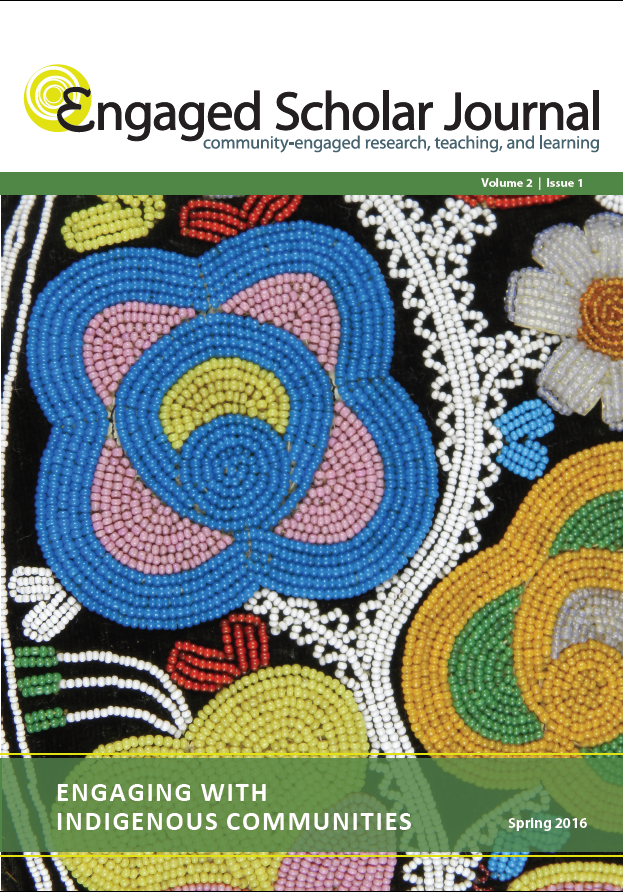Indigenizing Digital Literacies: Community Informatics Research with the Algonquin First Nations of Timiskaming and Long Point
DOI:
https://doi.org/10.15402/esj.v2i1.210Keywords:
information and communication technologies, community-engaged research, indigenous peoples, digital literacies, First Mile, Timiskaming First Nation, Long Point First NationAbstract
Community-engaged digital literacies initiatives can greatly benefit from knowledge and practices developed by Indigenous peoples. In this paper, we describe a research project to develop digital literacies with two Algonquin First Nations in Quebec: Timiskaming and Long Point. This project reflects a First Mile approach to Community Informatics, informed by the theoretical framework of Indigenous resurgence and by engaged research methodologies. In telecommunications and broadband terminology, communities are typically framed as the ‘last mile’ of development. The First Mile approach challenges this situation by encouraging projects that emerge from the locally determined needs of collaborating communities, who gain ownership and control of processes and outcomes. Drawing on community-engaged research methodologies, university-based researchers facilitate this work while community-based researchers integrate data collection, analysis, and public outreach activities into the lived realities of community members. We discuss how digital literacies projects can benefit from the theoretical framework of Indigenous resurgence, which stresses the daily practices that support the continual renewal of Indigenous communities.
Downloads
Published
How to Cite
Issue
Section
License
Authors who publish with this journal agree to the following terms:
- Authors retain copyright and grant the journal right of first publication with the work simultaneously licensed under a Creative Commons Attribution License CC BY 4.0 that allows others to share the work with an acknowledgement of the work's authorship and initial publication in this journal.
- Authors are able to enter separate, additional contractual agreements for the non-exclusive distribution of the journal's published version of the work (e.g., post it to an institutional repository or publish it in a book), with an acknowledgement of its initial publication in this journal.
- Authors are permitted to post their work online (e.g., in an institutional repository or on their website) after the publication of their work in the Engaged Scholar Journal.
- Please note that while every opportunity will be taken to ensure author participation in the editing process, due to time constraints final copyediting changes may be made before publication to ensure APA adherence throughout all submissions.




